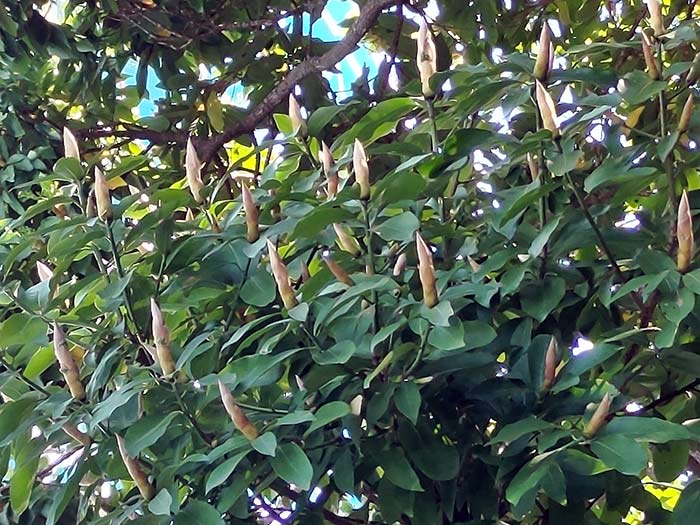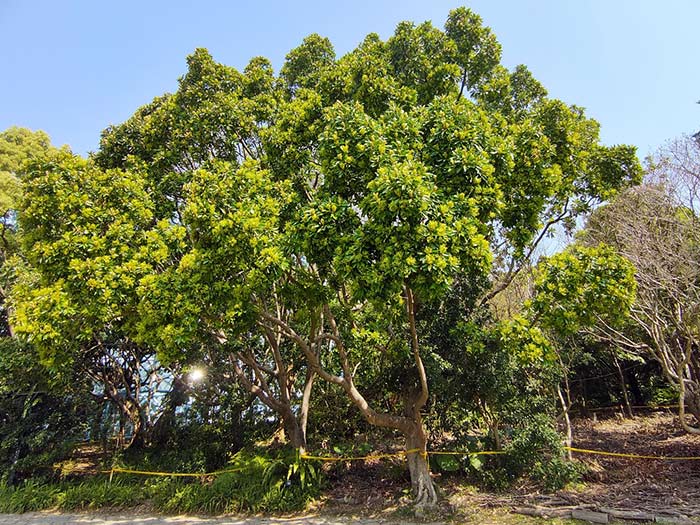Machilus kusanoi
Large-leaved nanmu is endemic to Taiwan. It was named by Japanese botanist Dr. Hayata Bunzo in 1911 to memorize the Japanese scholar Kusano Shunsuke, who collected the specimens, and his surname was Latinized to be the species name. It is distributed in the valleys and slopes of mid and low elevation broadleaf forests throughout the island of Taiwan, and prefers a warm and humid environment. It is one of the most important tree species in the low elevation broadleaf forests of Taiwan, and sometimes forms pure forests of a slightly larger area.
In terms of trunk, branches, terminal buds, leaves, and inflorescences, those of the large-leaved nanmu is even larger than other plants of the same genus native to Taiwan. The leaves can be as long as 15 centimeters. The shape of the tree is tall and majestic, the main trunk is straight, and the base of the trunk of the big tree often has buttress roots. Whether it is a single plant or planted as a pure forest, it could be excellent landscape for greening. Besides, the seedlings grow quickly, making it an excellent landscape plant.
The bark of the large-leaved nanmu has a sticky substance, which can be dried and ground into powder and mixed with water to turn into an adhesive for incense sticks used in rituals at temples in Taiwan, so it is one of the materials used in the production of incense sticks. The light reddish-brown wood is moderately hard, easy to process, and has a long shelf life. It can be used in construction, furniture, utensils, musical instruments, carvings, ships, vehicles, agricultural tools, coffins, plywood, bridges, and other applications. Among the indigenous peoples of Taiwan, the Paiwan, Rukai, and Puyuma who live in Taitung use the seeds of the large-leaved nanmu as a seasoning for their food.

